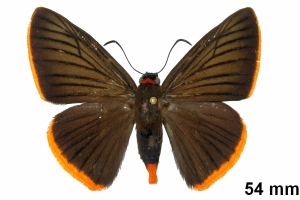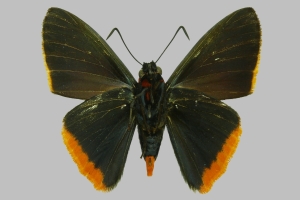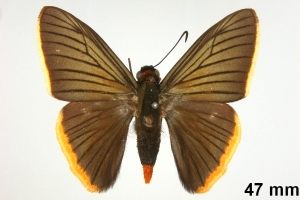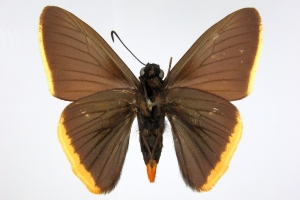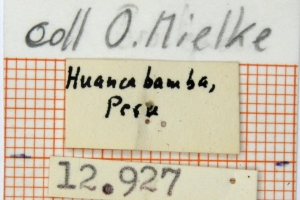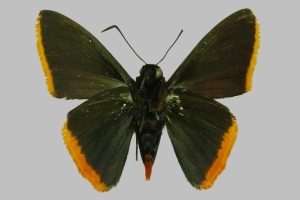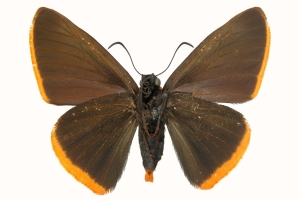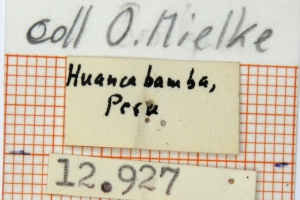Version 6 / 10 vom 15. Mai 2024 um 13:41:37 von Jürgen Rodeland
Inhalt
2. Diagnose
2.1. Männchen
1-3: ♂, Daten siehe Etiketten (fot.: Ernst Brockmann, Fotos bearbeitet: Michel Kettner), coll. Departamento de Zoologia, Universidade Federal do Paraná, Curitiba, Paraná, Brazil.
4-6: ♂, Daten siehe Etiketten (fot.: Ernst Brockmann, Fotos bearbeitet: Michel Kettner), coll. Departamento de Zoologia, Universidade Federal do Paraná, Curitiba, Paraná, Brazil.
7-9: ♂, Daten siehe Etiketten (fot.: Ernst Brockmann, Fotos bearbeitet: Michel Kettner), coll. Departamento de Zoologia, Universidade Federal do Paraná, Curitiba, Paraná, Brazil.
2.2. Weibchen
3. Weitere Informationen
3.1. Faunistik
Nach Mielke, Brockmann & Mielke (2022) kommt die Art in Peru und Bolivien vor.
Locus typicus: Peru.
(Autor: Michel Kettner)
3.2. Literatur
- Brockmann E., Mielke, C. G. C. & O. H. H. Mielke (2022): Hesperiidae III: New World Pyrrhopyginae, short text and plates. — In: E. Bauer & T. Frankenbach (ed.) (2022): Butterflies of the World 50: 40 p. + 76 pl. Keltern.
- Erstbeschreibung: Evans, W. H. (1951): A Catalogue of the American Hesperiidae indicating the classification and nomenclature adopted in the British Museum (Natural History). Part I. Introduction and Group A Pyrrhopyginae: i-x, 1-92, pl. 1-9. — Digitalisat auf biodiversitylibrary.org: [81], [pl. 9]
- Mielke, O. H. H., Brockmann, E. & C. G. C. Mielke (2022): Hesperiidae II: New World Pyrrhopyginae, detailed text. — In: E. Bauer & T. Frankenbach (ed.) (2022): Butterflies of the World 49: 120 pp. Keltern.




![Vorkommen in Peru [Locus typicus; Foto im Forum]](/res/img/flag/pe.gif)
![Vorkommen in Bolivien [Foto im Forum]](/res/img/flag/bo.gif)

